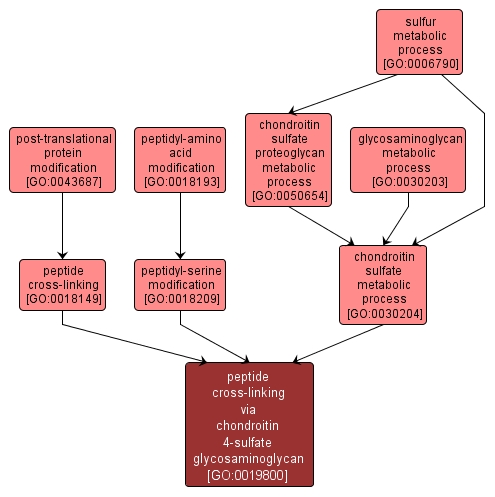| Desc: |
The formation of a cross-link between peptide chains mediated by a chondroitin 4-sulfate glycosaminoglycan that originates from a typical O-glycosidic link to serine of one chain; the other chain is esterified, via the alpha-carbon of its C-terminal Asp, to C-6 of an internal N-acetylgalactosamine of the glycosaminoglycan chain. |














